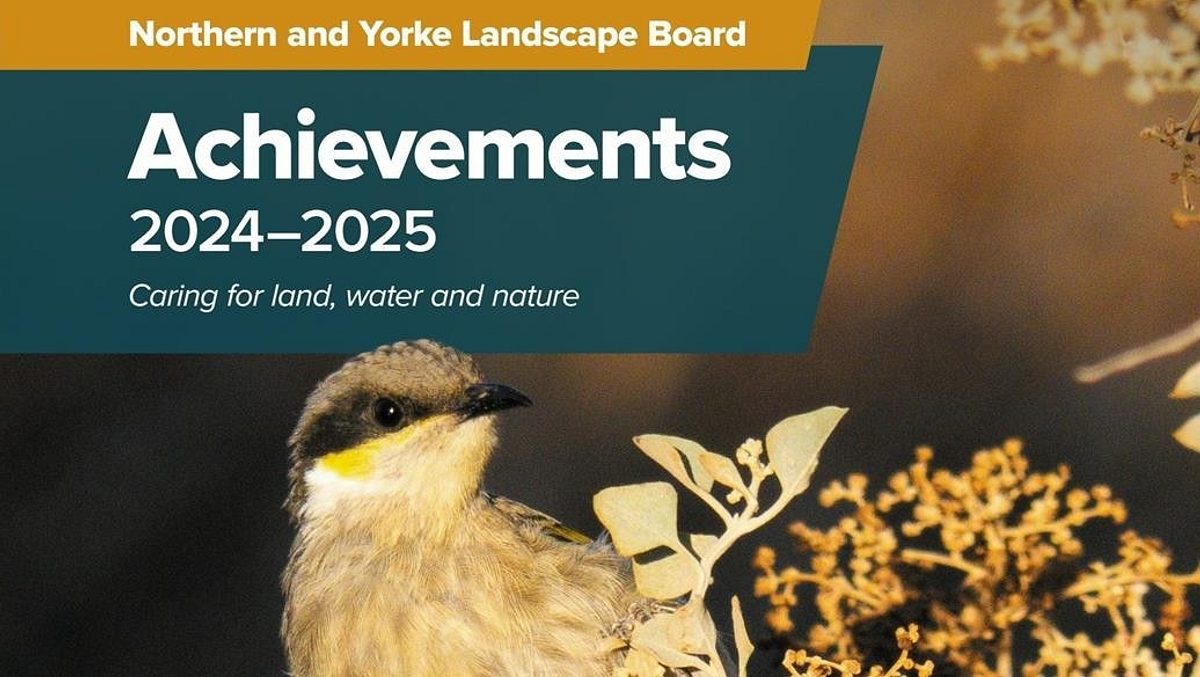Drones target noogoora burr infestation along Willowie creekline
Drone technology is tackling a plague infestation of the pest plant noogoora burr that has travelled 19km along Amyton Creek near Willowie.
The declared weed, which was identified as an increasing issue in the area 3 years ago, poses a serious threat to local farming operations and the survival of native vegetation.
Fifth generation grazing and cropping farmer Peter Barrie is one of 12 landholders involved in the Northern and Yorke Landscape Board project that aims to eradicate the weed and prevent it from moving further downstream.

“Noogoora burr is a prolific seeder and it tangles in wool. Sheep would spread noogoora burr over the rest of the farm if it’s not treated,” he said. “And Amyton Creek overflows into the Willochra Creek, which flows into Lake Torrens, so there’s a large area that potentially can be infested unless we’re successful in eliminating it.”
Efforts by Mr Barrie to spray the weed from a 4-wheel motorbike or bury large infestations with a loader proved dangerous on his property. “Having nearly tipped the loader over when the sand bank gave way where I was working, I decided that wasn’t really an option,” he said.
Landscape Officer Shane Hooper said the Northern and Yorke Landscape Board chose to fund a drone contractor to map and then spray out the weed infestation to quickly get on top of this invasive spreader.
“We chose to use drone technology to spray the noogoora burr in the creek due to the inaccessibility for conventional spray equipment. Getting a boom sprayer down into some of these creeks is quite dangerous and it’s not terribly practical to do 19km of creek line with a backpack sprayer,” he said.
“With the drones, the operator can sit up on the creek and safely spray, letting the drone do all the work over the rough ground.”

The process involved a drone contractor mapping a 100 metre-wide stretch of the 19km terrain with a specialised mapping drone that takes high resolution video and distinguishes the noogoora burr from native vegetation based on colour identification. Due to some dense infestations, manually marking waypoints was also required. With the data processed, a spray drone carrying a mix of water and spray material was then used to treat the noogoora burr plants in 10-minute intervals.
The significant down draft caused by the drone propellers, coarse spray droplets and mapping data help to avoid off-target damage of native vegetation like the native pine trees that are thriving along the Barrie’s section of the creek.
A challenge faced by the drone spraying team was the staggered germination of noogoora burr, which was exaggerated by the cooler summer. However, both Mr Hooper and Mr Barrie have been impressed with the results.
“So far we’ve had an excellent strike rate and landholders are working with us to mop up any plants that might have been missed,” said Mr Hooper.
“I believe from what I’ve seen, [drones are] the best way of handling creek lines where there are difficult to control weeds,” said Mr Barrie. “I really think it’s got a big place in agriculture. I could see that I’ll be using it again for weed control because it’s just so much more efficient and so much safer than trying to do it manually.”
For more information about controlling noogoora burr weeds, please visit our pest plants page.


